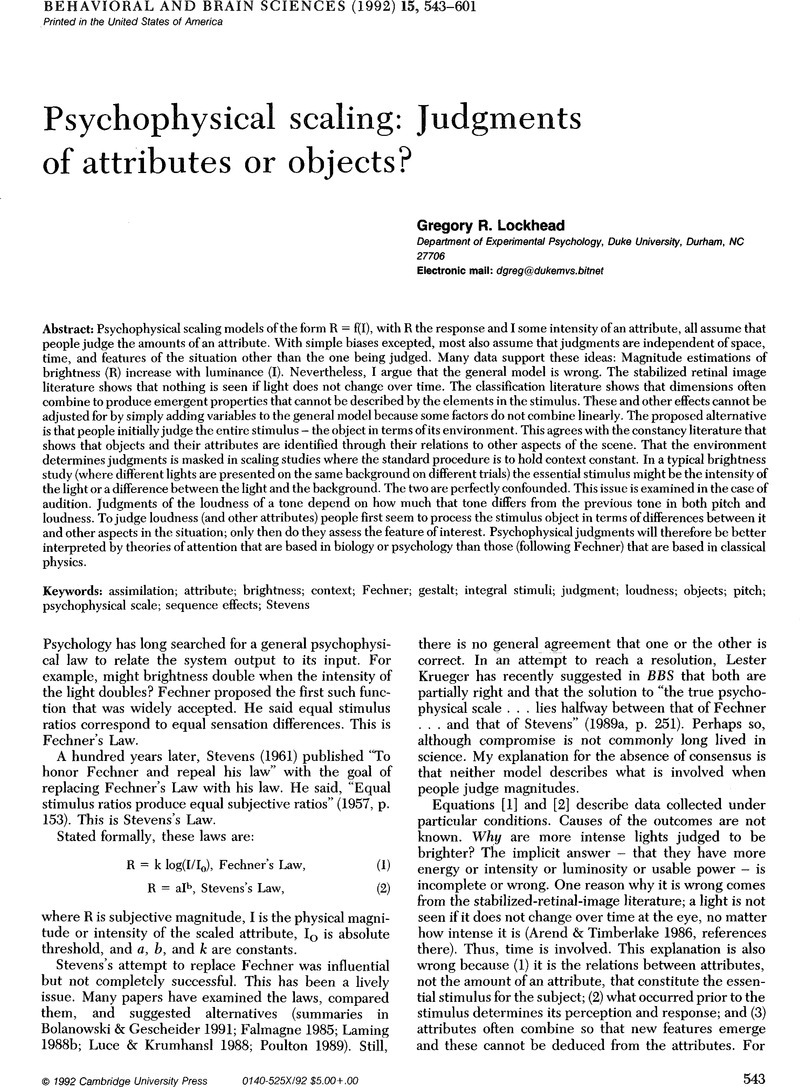Crossref Citations
This article has been cited by the following publications. This list is generated based on data provided by Crossref.
Poulton, E. C.
1995.
Bias by stimuli presented before the start of an investigation.
Behavioral and Brain Sciences,
Vol. 18,
Issue. 3,
p.
604.
Massaro, Dominic W.
1995.
Processing attributes and judging objects.
Behavioral and Brain Sciences,
Vol. 18,
Issue. 3,
p.
601.
Ross, Helen E.
1995.
Weight and mass as psychophysical attributes.
Behavioral and Brain Sciences,
Vol. 18,
Issue. 3,
p.
606.
Lockhead, Gregory R.
1995.
Psychophysical scaling methods reveal and measure context effects.
Behavioral and Brain Sciences,
Vol. 18,
Issue. 3,
p.
607.
Müller, Friedrich
1995.
Arguments in favour of a psycho-psychophysics.
Behavioral and Brain Sciences,
Vol. 18,
Issue. 3,
p.
602.
Reeves, Adam
1995.
Psychophysical scaling: A conditional defense of R=f(I).
Behavioral and Brain Sciences,
Vol. 18,
Issue. 3,
p.
605.
Balakrishnan, J. D.
1997.
Form and objective of the decision rule in absolute identification.
Perception & Psychophysics,
Vol. 59,
Issue. 7,
p.
1049.



